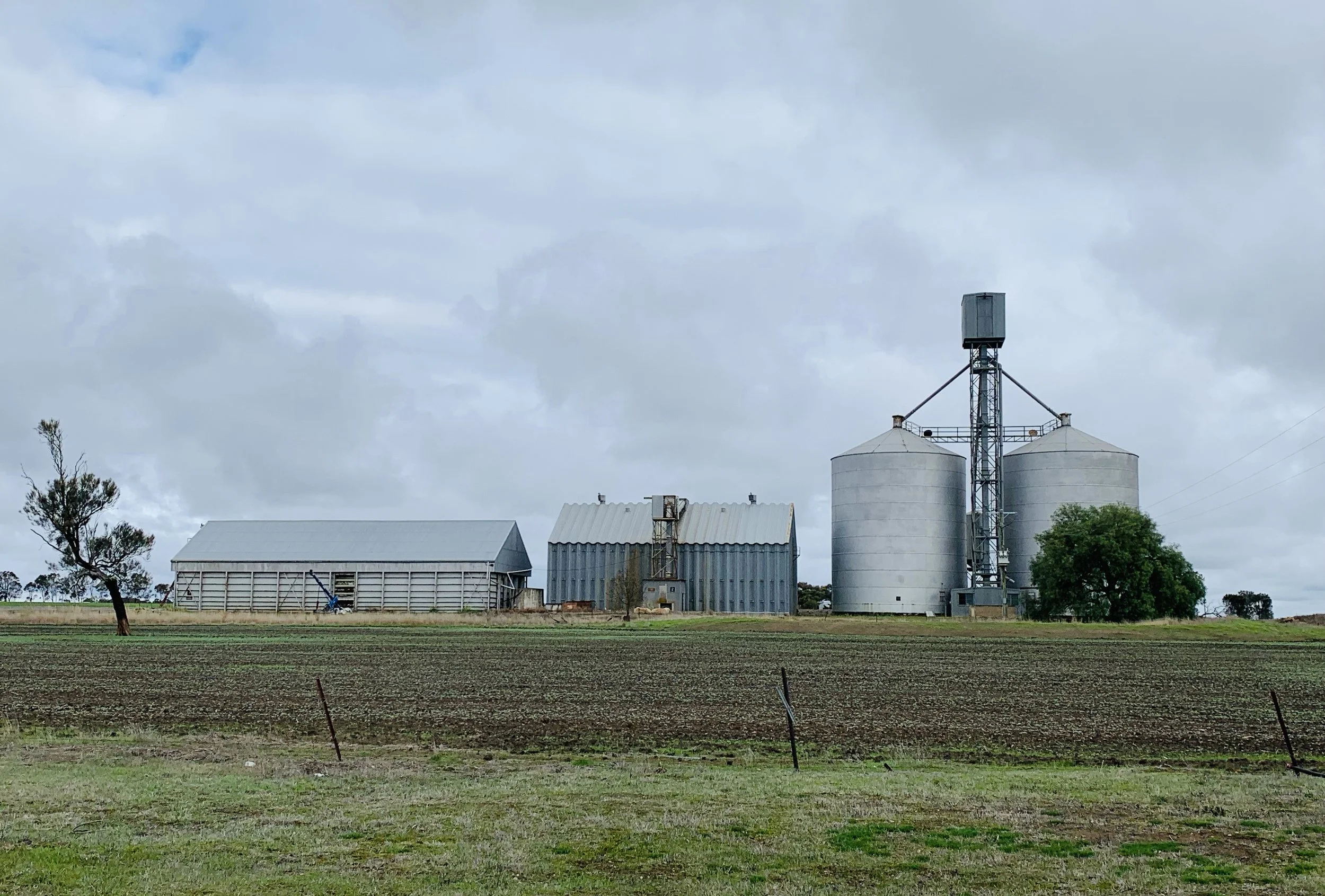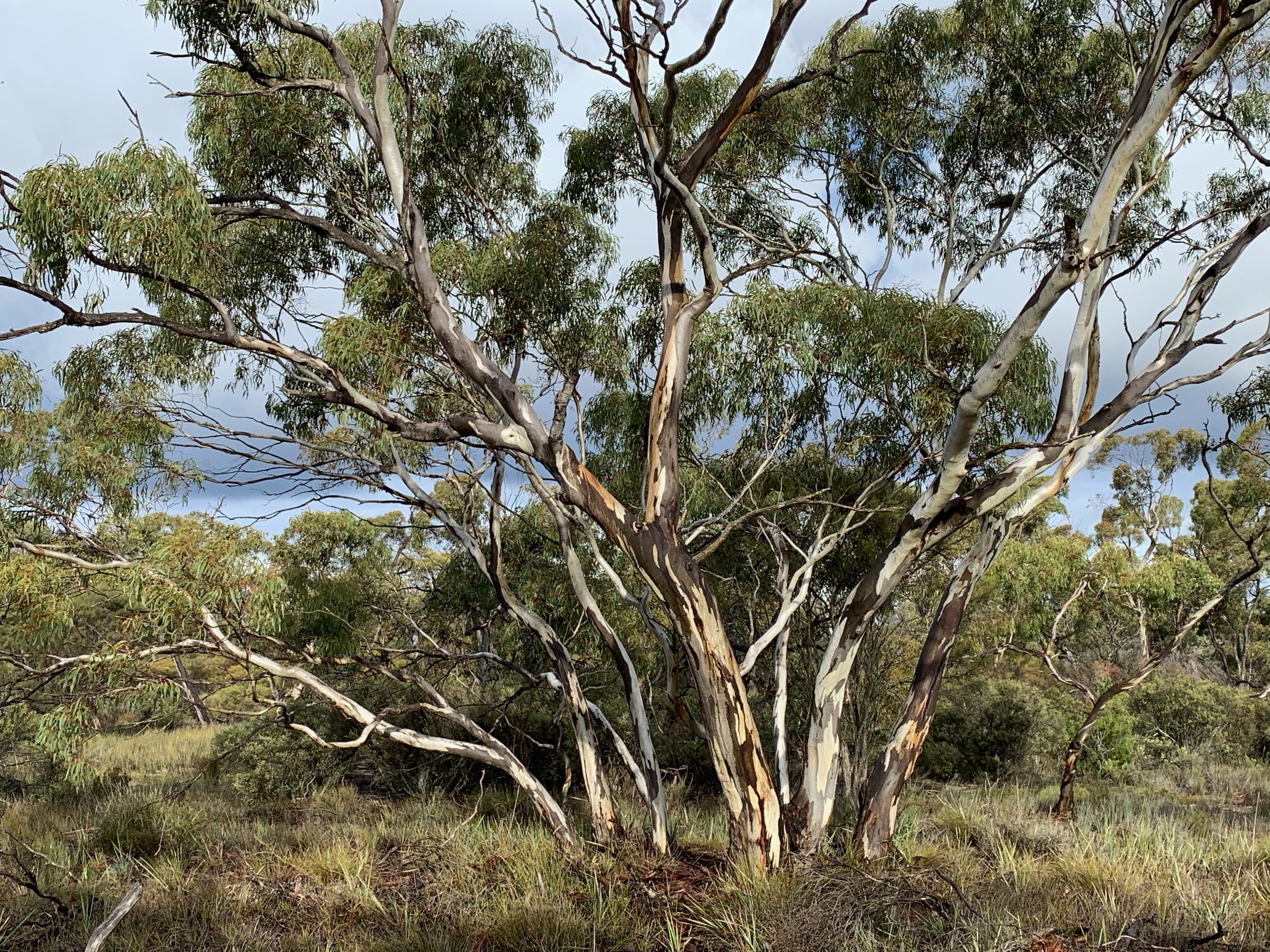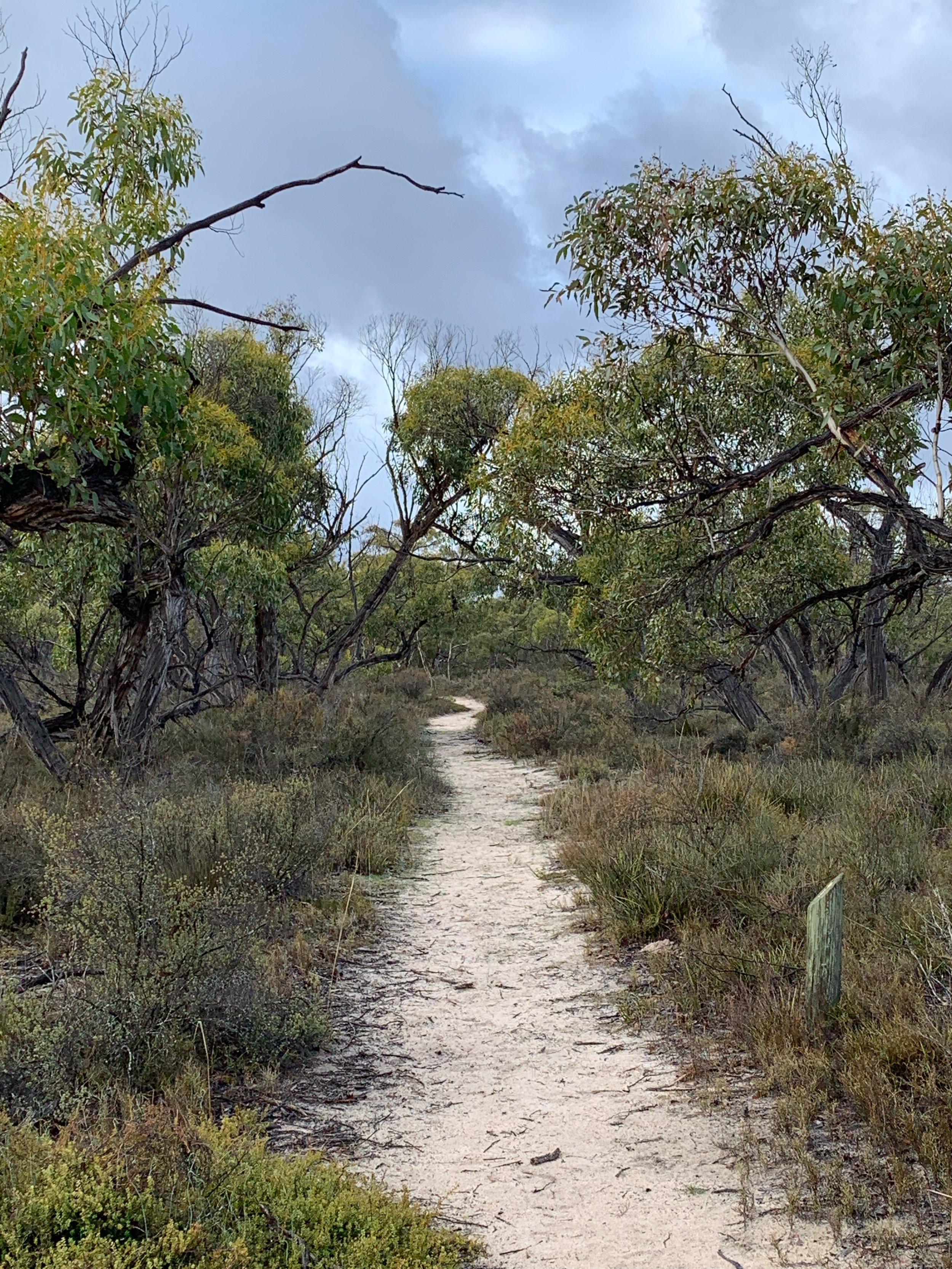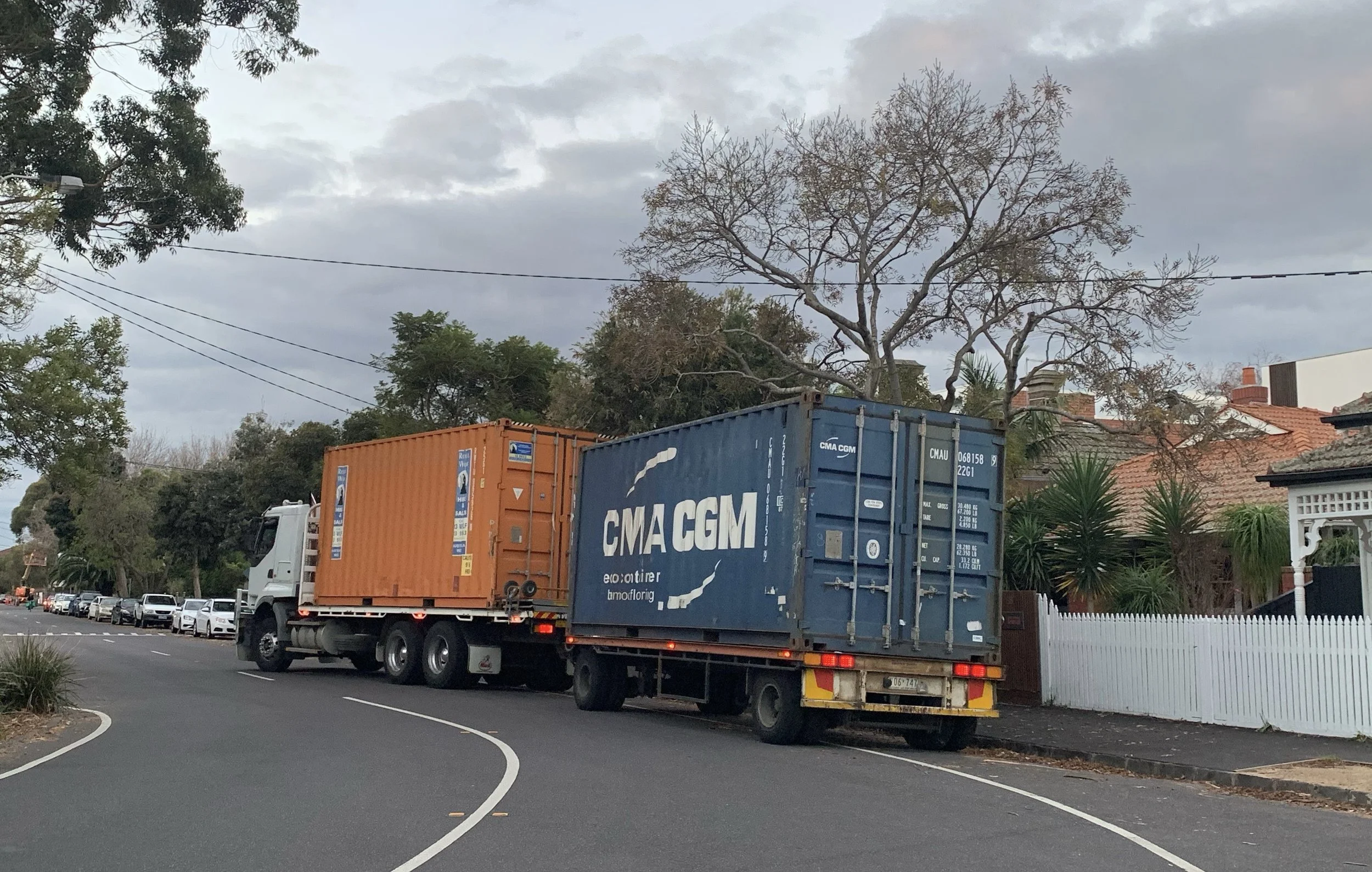But is it art?
We had two days in and around Horsham in northwest Victoria. Rain showers arrived earlier than anticipated, so there was dead light over Pink Lake at Dimboola, but the colour was still impressive. The degree of pinkness varies from one pink lake to another: this will explain the phenomenon. If you’ve read ‘this’, you’ll appreciate that Lake Hillier should be on everyone’s to-do list for Western Australia, even if access is a challenge – it’s on Middle Island, 11 km off the coast of Cape Arid National Park.
We walked by the Wimmera River and had a quick peek at Horsham Botanical Gardens.
Wimmera River
Trees tangoing
Silo art is big in this part of the world, and Brim is one of the best-known examples. It was certainly the first I became aware of, and I still think it’s one of the best. The colour is appropriate and the characters are well captured.
The concrete silos were built in 1938, and were ready to store bagged grain by the harvest of 1938-39. The roof is almost 29 metres above the ground. The portraits were added much later, of course, and sparked a movement towards photorealistic murals depicting a uniquely Australian way of life. Brisbane street artist Guido van Helten began painting on 14 December 2015, and finished by 4 January 2016. High up in a cherry-picker, he had to contend with extreme heat, strong winds, a dust storm and dry lightning. He rested during the worst heat of the day, then resumed his task in the evening.
Large art on big buildings can be found across Australia, from WA to Queensland, on a variety of outbuildings. The largest number of silos are in Victoria, which is the smallest state, so the distances between them are shorter, in theory, if you fancy following the Silo Art Trail. There’s even a painted silo in Brunswick, a suburb of Melbourne. It’s hard to find up-to-date figures, and there are bound to be more popping up as rural communities realise the tourism potential. A painted grain silo can put a little town on the map, as well as strengthening a sense of community. About the closest to a total I can get is from 2021, assuming this article was fact-checked. There were 45 silos and 84 water towers when the closest thing to a survey was done.
Sheeps Hill silo
Silo art in Goroke
While researching silo art I remembered an excellent example on the way to Lake Mungo in 2019. It’s a Black & Tan Kelpie (Australian sheepdog). The detail on the dog’s face is remarkable.
Nullawil
The style, colour and skill of silo painting vary considerably. We found more when we reached WA, where a fun element had crept in, as well as minimalism. Why a sea dragon? It’s the name of the local rugby league team.
Sea dragon in Albany
Lifecycle of a banksia, Ravensthorpe
Pingrup, known for racing, sheep and a blue tractor
But back to northwest Victoria. Aside from pink lakes and silo art, Mt Arapiles is a dramatic quartzite outcrop rising 140 metres above the Wimmera plain, a strangely pastel landscape. You can drive up the mountain, or rock-climb if you prefer a more difficult life and you know what you’re doing.
Mitre Lake from Mt Arapiles
Purply patchwork
One day in the Horsham campsite, I’d good-morninged a lady who was headed up Darwin way. She told me South Australia was about to lift its covid restrictions for Regional Victorians. We called the relevant SA government department to confirm, but their lips were sealed. The announcement we were waiting for was on their website by 9 pm, however. We could move on!
Getting back on the road meant heading north through Little Desert National Park. There was a delightful short walk through stringybark woodland with yellow gums and mallee – and no one else around. An increasingly threatening sky produced some great light. We were running from rain by the end.
Mallee (many trunks from an underground stem)
Stringybark Nature Walk
Gumblossoms
As we sped down the Western Highway for the South Australian border, this stopped us in our tracks, at Kaniva. Even the image of an Australian Hobby – a darting, medium-sized falcon – was enough to disturb the locals. The silo was spectacular, if a little garish.
Note Brim silo is most often claimed to be the first of its kind, in late 2015. Northam silo in WA was completed in March the same year, however, so technically was the first.





























